
The Open Source Hardware Association was recently announced and a familiar face is leading this monumental effort, Alicia Gibb. You may recall her from the Open Hardware Summit (co-chair) as well as Bug Labs. The following is an interview via email with Alicia, the president of OSHWA. Hi Alicia, thanks for doing this interview. Where are you right now?
Right now I’m in Washington D.C. at an open hardware event, OH/DC, set up by Michael Weinberg of Public Knowledge. The purpose of OH/DC is to introduce the topic of open source hardware to lawmakers and congress people. There were two panels followed by a demo session, and the audience was made up of said lawmakers, staffers, and the general public. Thanks to Michael Weinberg for putting in his efforts to the movement!
Can you tell us a little about about your background (Arduino thesis to Bug Labs to the Open Hardware Summit)?
I am a strong believer in freedom of information. I started my career as a librarian, and have always had a passion for both the arts and science. Combined, those things landed me in open source hardware. I wrote my art history thesis on the Arduino microcontroller, became a member at NYC Resistor, took a position heading up the Test Kitchen at Bug Labs, an open hardware company, and with persuasion from Peter, the CEO at Bug, started the Open Hardware Summit.
What is the Open Source Hardware Association?
The Open Source Hardware Association will be an advocacy group, mostly educating people on what open hardware is, the benefits, and best practices, as well as being a roof for all the various items built by the community so far, including the Open Hardware Summit, the open hardware definition, and our logo.
Why does open source hardware need an Open Source Hardware Association?
There are a lot of excellent things done by the community that don’t really have a cohesive web presence to live under. We hope to give the community a bit of structure by organizing information around open source hardware under the Association. The other reason is that currently a lot of our knowledge about open hardware is colloquial, and as you cited in your recent blog post, we have unspoken rules. We hope to create a resource to make all these things more transparent and provide a formal entity that can answer questions about how, why, what, and the best practices of open hardware.
What experiences in your past helped you put this together?
I don’t have any experience of starting a non-profit. What has really helped me put this together is the energy and enthusiasm from the community, and my desire to serve a community which welcomed me and taught me electronics, so this is my way of giving back.
What type of non-profit is the foundation, and why did you select that type of non-profit?
It’s a 501c3 non-profit association. We actually had a conversation with many of the businesses in the field whether we should start a business league (a non-profit 501c6) or a 501c3 charitable entity in the division of education. Collectively, there was much more interest in educating the general public about open hardware and creating an organization that would be more about education, because historically, the DIY/Maker Movements are all about citizen science, art, and individuals educating the world.
What are the pros/cons for a non-profit foundation?
Pros will be tax exemption status, cons will be tax exemption status. Let me explain: by having tax exemption status it will make it easier to collaborate with universities, receive grants, and give donors a tax break. However, non-profit status also dictates what your organization can do. For example, giving scholarships at the Summit to a product which will make a profit gets trickier as a non-profit, lobbying rights are restrained a bit, and we have to be careful with our tax application, as the IRS is currently scrutinizing open source entities geting non-profit status. Mach30 went through the process recently, and here’s an example of the extra scrutinization open source has come under. We hope that our tax status request will be as painless as theirs!
Are there any similar foundations you modeled the Open Source Hardware Association after?
We are depending heavily on the public information given out by Mach30 of how to file and what questions we can expect. There’s not really one organization we’re following specifically, but we’ve taken pieces from various groups (such as OSI, Apache Foundation, Gnome Foundation, EFF, and the Linux Foundation) and compared their processes to weigh our own options. We haven’t set up much of the structure yet, as we want community involvement.
What are the goals and plans of the Open Source Hardware Association?
Just getting off the ground is our first and foremost plan. We have our formal purposes sent into the state laid out on oshwa.org, however those are in flux as the state recently denied us incorporation because our purposes were too promotional of open source hardware. We will continue to work with the various government branches to get all the wording right. We will also assist with running the Open Hardware Summit, acting as a financial branch once we have non-profit status. We’re putting together an animation video of what open hardware is for the general public, and holding domain-specific meetings to learn about best practices needed in things like open hardware and education, fashion as open hardware, open hardware file formats, etc. We are also showing support and spreading the word for other projects such as the open hardware survey by Catarina Mota and the event Michael Weinberg has organized in D.C.
What are some of the specific tasks you want to see the Open Source Hardware Association do in year one?
For the first year, we are hoping to do nothing more than give the association its feet. We hope to incorporate, create by-laws, establish a process for membership (which turns out to have more legal ramifications that we expected), and file for non-profit status. However, Catarina Mota has already helped OSHWA by implementing a survey to give our organization some metrics to stand on, and of course Catarina and Dustyn Roberts will be running the Summit this year, also housed under OSHWA.
Who are the board members? How were they selected?
So far the board members are Danese Cooper, Alicia Gibb, Catarina Mota, Windell Oskay, Nathan Seildle, and Wendy Seltzer. There was a working group of about 25 people who helped this organization get started. Collectively we chose board members. As soon as we get membership figured out, members will vote in three more board members, and will vote in all future board positions.
You have real-live lawyers on the board and helping out — what will they be doing?
Well, the real-live lawyer helping us on incorporating the organization and providing us with legal advice is not on our board. Aaron Williamson from the Software Freedom Law Center is generously giving us his time pro-bono. As for board members, Wendy Seltzer is a lawyer, but her position doesn’t really differ from the others. She has a valuable perspective, as does everyone with their field-specific knowledge.
What’s a typical day like when you’re running a newly formed foundation?
It’s mostly paperwork, reading government documents, and an occasional phone call to the state or our lawyer. As soon as we get formally incorporated and can have a bank account, I’m sure my days will turn to fundraising.
How can the makers out there who design hardware help? How can the supporters and users of open hardware help?
We are not as much asking makers what they can do for us, but rather what we can do for them! The best help and support is an understanding that we’re flying by the seat of our pants, but also want feedback to know how we can best serve this community. Of course, there will also be the aspect of financial support that we hope at have. We’re not sure if this will be purely donation-based or if we should charge for membership to raise funds, but we definitely want involvement from the community for that!
Are there mailing lists and ways for folks to join in and discuss open source hardware now?
There sure are! The Open Hardware Updates list is the list we’re currently using to announce and update the community. Sign up for it here.
What is the current state of licensing for open source hardware? Will the foundation be working on licenses? Awareness? What role do think the Open Source Hardware Association will have with licenses?
There are three licenses for Open Hardware available currently: CERN OHL, TAPR, and the Apache Hardware license, however lots of people also use Creative Commons as a way to publish some files. In Catarina’s recent survey, she found that 50% of people producing and selling hardware don’t use any licenses at all. We won’t be working on producing licenses, but we will be assisting in pointing people to licenses and how they differ. We will also be working on researching people’s stance on licenses, and whether we need this system or should be using something else all together. Possibly a framework that hasn’t even been invented yet!
How does the patent system relate to OSHW?
I think open source hardware is the 21st patent system. Patents started in similar ways, by open sourcing your innovation and telling the world how you did it. In exchange for open sourcing your innovation, you got 20 years of exclusive rights.
Open source hardware also is about open sourcing innovation, but also democratizing innovation, but does not come with 20 years of exclusive rights. The benefit is that you have an entire community contributing to your designs, innovating, and sharing their derivatives to your product. It pushes the original designer to create a better product and continue to improve it rather than lock it in a 20-year stalemate. Open source hardware pushes innovation further and faster at a more appropriate speed than a 20-year timeline in technology.
Where can people meet you and other board members in person (events, etc)?
We will most likely all be at the Open Hardware Summit in September. Since this group is diverse in geographical location and international, it may be difficult to get all of us together at once, but we’re always available through info@oshwa.org.
What’s the biggest challenge ahead for open source hardware in your view?
I think our biggest challenge will be educating the masses on why open hardware is beneficial and how democratizing innovation will make for a better world. For people who have a long tradition with the patent system, introducing something that doesn’t give 20 years of exclusive rights is asking them to think of protection and business models very differently.
In what ways do you think open source hardware will influence future technologies?
I recently saw Neil deGrasse Tyson speak (he blew my mind). He talked about when the American space program was started in the 1960s and the futuristic vision that came with it. People started imagining food that came in instant packets, talking kitchens, and flying cars. When you put great scientific feats and inventions in the hands of the public, the imagination of the future belongs to everyone. And open hardware is going to let you know how to build it.
I’d like to once again thank Alicia for being part of this interview. Please feel free to post up your own questions and comments!







 ]]>
]]>






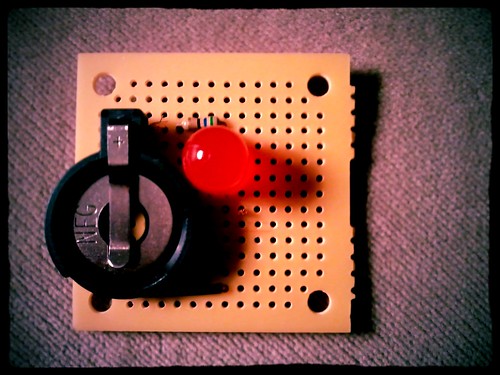



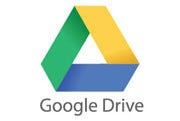





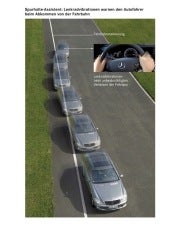

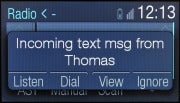
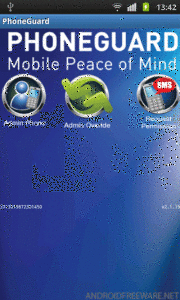

Posting comment ...